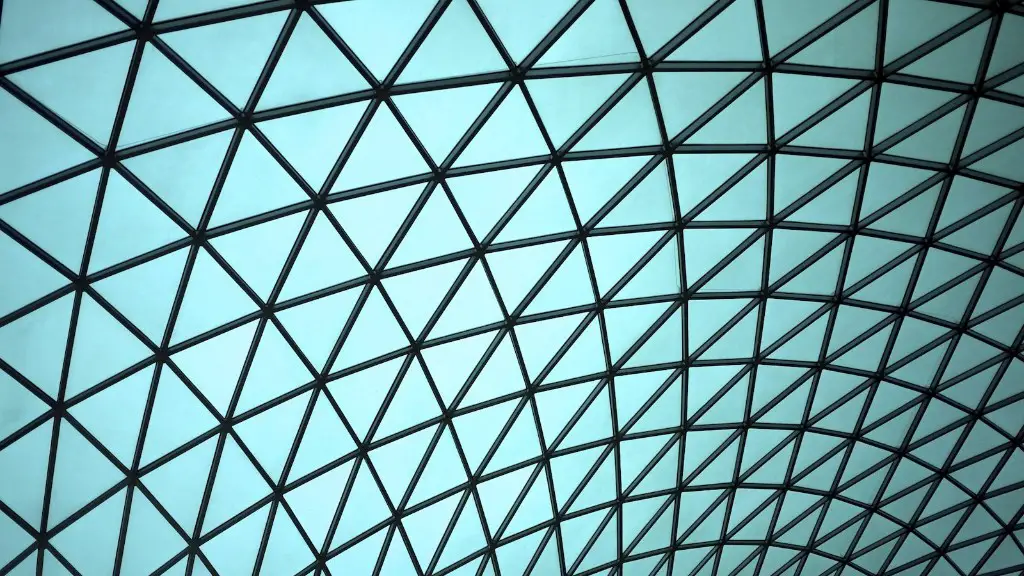In the culture of ancient Greece, balance and order were of utmost importance. This can be seen in many aspects of Greek life, including their architecture.Greek architecture is characterized by a rational, mathematical approach and a strict adherence to the rules of proportion and symmetry. This results in a sense of order and calm that is inherent in all Greek buildings. Even in the most ornate and detailed of structures, such as the Parthenon, there is a feeling of serenity and balance. This is due to the strict attention to detail and the use of harmonious proportions. It is no wonder that the principles of balance and order continue to influence architects all over the world today.
The Greek architectural style is characterized by a number of features, including a focus on harmony and balance. This was achieved by using certain proportions and arrangements of elements that were considered to be pleasing to the eye. Order was also important, as all the parts of a building needed to work together in a logical way.
What did Greek architects try to balance in their work?
Greek architects were known for their pursuit of perfect balance in their designs. This was meant to reflect the harmony and order of the universe. The most famous example of Greek architecture is the Parthenon, a temple dedicated to the goddess Athena.
Columns were an important element in Ancient Greek architecture. They supported the roof and also helped to give buildings a feeling of order, strength, and balance.
What is the Greek order of architecture
The Greek orders are three distinct orders in Ancient Greek architecture: Doric, Ionic, and Corinthian. These three were adopted by the Romans, who modified their capitals. The Doric order is the oldest and simplest of the three orders, characterized by its heavy, columnar capitals and its lack of a base. The Ionic order is characterized by its more ornate capitals, which are decorated with volutes, and its slender columns. The Corinthian order is the most ornate of the three orders, characterized by its intricate capitals, which are decorated with acanthus leaves.
The three most common styles of ancient Greek architecture are the Doric, the Ionic, and the Corinthian. The Doric style is characterized by its simple, sturdy construction, while the Ionic style is thinner and more elegant. The Corinthian style is rarely seen in the Greek world, but is often seen on Roman temples.
How did the Parthenon show the ideals of balance and order?
The Parthenon is an excellent example of balance and order. It has 8 columns in front and 17 on each side, making it very symmetrical. The columns are also made out of marble, making the building very solid.
Greek artists wanted people to see reason, moderation, balance, and harmony in their work. They hoped their art would inspire people to base their lives on these same ideas. The idealized visions of beauty and harmony in Greek art were meant to contrast with the chaos and violence of the real world. Greek artists saw their role as one of teaching people how to find order and meaning in their lives.
What is balance in ancient Greek?
Sophrosyne is an ancient Greek concept of an ideal of excellence of character and soundness of mind. When combined in one well-balanced individual, it leads to other qualities such as temperance, moderation, prudence, purity, decorum, and self-control.
The diekplous was an ancient Greek naval operation used to infiltrate the enemy’s line-of-battle. The Greek navy would sail in an upside-down ship formation, led by the commander’s ship. The purpose of this maneuver was to break through the enemy line and allow the Greek ships to attack from the rear.
Ramming was a common tactic used in naval battles. The Greek ships would purposely crash into the enemy ships in order to damage or destroy them.
Shearing was another tactic that was used to damage enemy ships. The Greek ships would use their long oars to slice through the enemy’s sails and rigging.
Marines and archers were also used in naval battles. The marines would board the enemy ships and fight them hand-to-hand. The archers would shoot arrows at the enemy from a distance.
What are Greeks order of architecture explain their types and uses
The Doric order is marked by its simple, sturdy columns with plain, round capitals and no base. The Ionic order is distinguished by its slender columns with scroll-like capitals, and the Corinthian order is characterized by its ornate columns with intricate capitals. Ancient Greek architecture reached its peak in the Classical period, with buildings that incorporated all three of these orders into one harmonious whole.
The Greeks believed that the universe was governed by harmony and balance, which they attempted to replicate in their architecture. They used mathematics and geometry to create a sense of proportion and balance in their buildings, which they considered to be beautiful. This idea of beauty as harmony and balance is a key part of Greek architecture.
What is the most important Greek architecture?
The Parthenon is one of the most famous landmarks in the world and is generally regarded as the most influential building in Greek history. It stands on the citadel of the Athenian Acropolis in Greece and construction began in 447 BC. The Parthenon is one of the most popular tourist attractions in Athens and is definitely worth a visit if you are in the city.
The three classic orders of columns are the Doric, the Ionic, and the Corinthian. The Doric order is the simplest and shortest, with no decorative foot, vertical fluting, and a flared capital. The Ionic order is taller and more ornate, with a decorative foot, vertical fluting, and a carved capital. The Corinthian order is the most ornate, with a decorative base, carved capitals, and intricate fluting.
What makes Greek architecture so important
The Greek’s formulas for architecture were way ahead of their time, and influenced many subsequent architectural styles including Renaissance and Neoclassical. Even modern architects have been inspired by Greek architecture. The Greeks really knew how to build beautiful, functional and long-lasting structures, and we continue to benefit from their wisdom today.
The three classical orders of architecture—Doric, Ionic, and Corinthian—correspond to different periods in the history of Greek architecture. The Doric order is the earliest and most simple, characterized by its heavy columns and plain capitals. The Ionic order emerged later and is characterized by its slender columns and ornate capitals. The Corinthian order is the most advanced and is characterized by its even more slender columns and highly decorative capitals.
What were important values in Greek architecture?
This is an important topic in the history of architecture. The Greeks were very concerned with simplicity, proportion, perspective, and harmony in their buildings. This influenced architects in the Roman world and provided the foundation for the classical architectural orders. These orders dominated the western world from the Renaissance to the present day.
One of the things that makes the Parthenon so harmonious and balanced is the attention paid to proportions. The 4:9 ratio expresses the relationship of breadth to length, and the column diameter to space between columns. This attention to detail creates a sense of cohesion that is very pleasing to the eye.
Final Words
The ancient Greek architects saw themselves as responsible for two different but equally important aspects of their buildings: the functional aspect, which had to do with the building’s purpose and utility, and the aesthetic aspect, which had to do with the building’s beauty and form. They believed that the successful harmonious combination of these two aspects was what produced the ideal building.
Broadly speaking, Greek architecture was governed by the principles of balance and order. This can be seen in the way that Greek temples were designed and constructed, with a symmetrical layout and a focus on proportion and harmony. These elements helped to create a sense of order and calmness, which was seen as being in keeping with the ideas of balance and harmony that were central to Greek culture.





